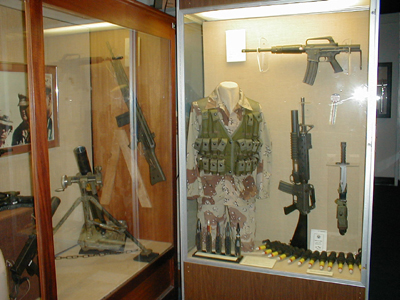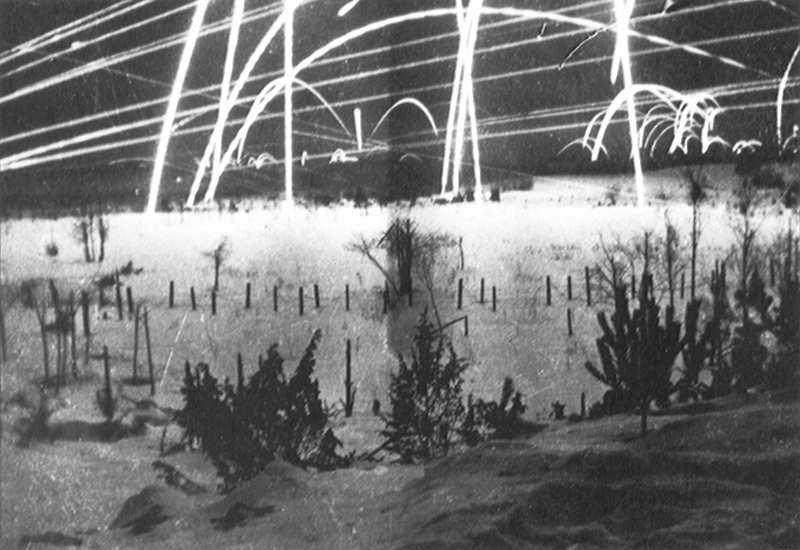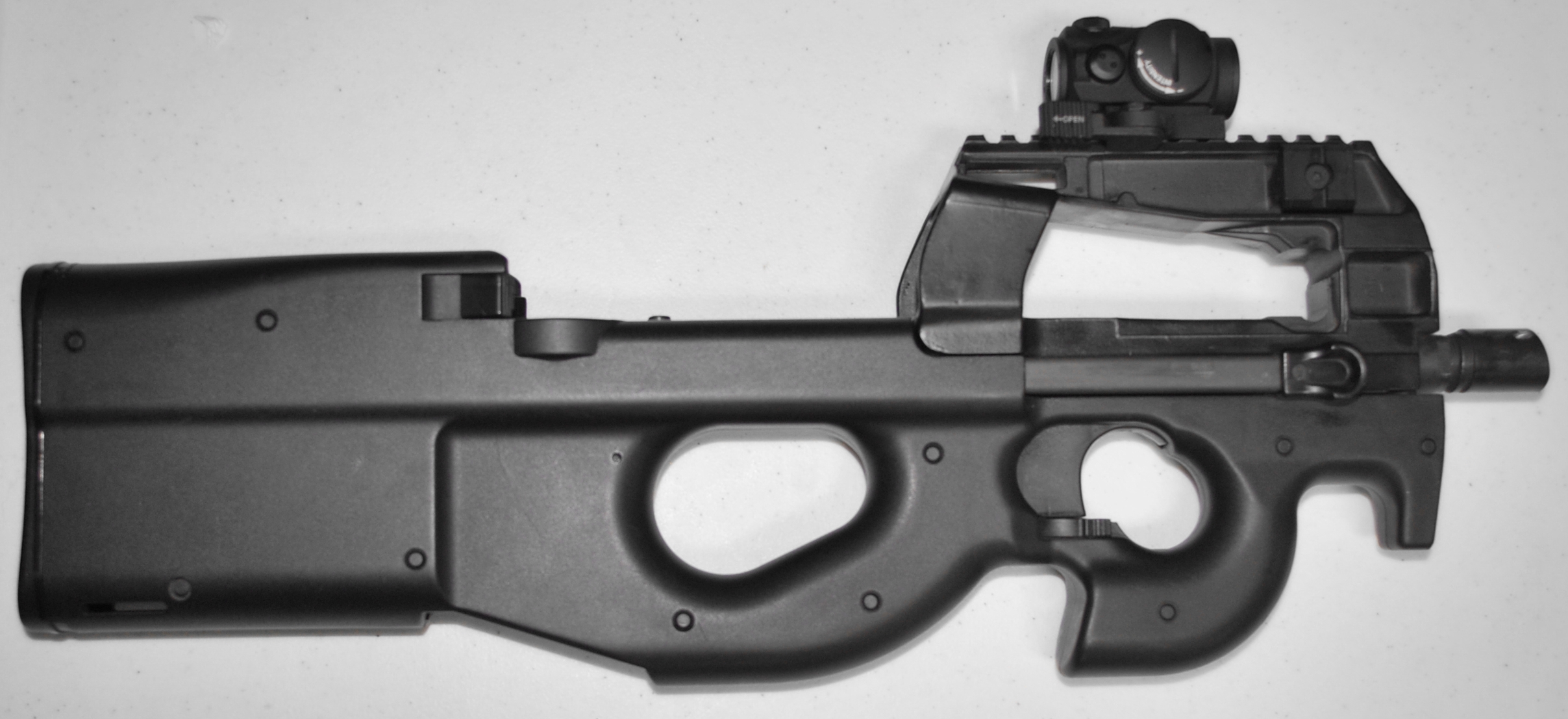|
Chauchat-Ribeyrolles 1918 Submachine Gun
The Chauchat-Ribeyrolles 1918 submachine gun is a French prototype automatic weapon. In 1917, the French Army adopted the Mle. 1917 semi-automatic rifle made by Ribeyrolles, Sutter and Chauchat (RSC), who already developed the "Chauchat" Mle. 1915 LMG. In 1918, they presented a "pistolet-mitrailleur" (submachine gun), meant to be used for close-range protection for the French tank crews. The weapon is based on the RSC Mle. 1917 semi-automatic rifle mechanism. The first trials used a Mannlicher–Berthier clip holding eight cartridges. The trials continued until 1919 with a weapon using the same magazine as the Chauchat. The results were satisfactory but the weapon was too powerful for the intended self-protection use. A mix of standard and tracer bullets was planned to be used to assist in aiming. See also * Ribeyrolles 1918 automatic carbine * M231 Firing Port Weapon The M231 Firing Port Weapon (FPW) is an adapted version of the M16 assault rifle for shooting from f ... [...More Info...] [...Related Items...] OR: [Wikipedia] [Google] [Baidu] |
Submachine Gun
A submachine gun (SMG) is a magazine-fed, automatic carbine designed to fire handgun cartridges. The term "submachine gun" was coined by John T. Thompson, the inventor of the Thompson submachine gun, to describe its design concept as an automatic firearm with notably less firepower than a machine gun (hence the prefix " sub-"). As a machine gun must fire rifle cartridges to be classified as such, submachine guns are not considered machine guns. The submachine gun was developed during World War I (1914–1918) as a close quarter offensive weapon, mainly for trench raiding. At its peak during World War II (1939–1945), millions of SMGs were made for use by regular troops, clandestine commandos and partisans alike. After the war, new SMG designs appeared frequently.Military Small Arms Of The 20th Century. Ian Hogg & John Weeks. Krause Publications. 2000. p93 However, by the 1980s, SMG usage decreased. Today, submachine guns have been largely replaced by assault rifles, w ... [...More Info...] [...Related Items...] OR: [Wikipedia] [Google] [Baidu] |
Chauchat
The Chauchat ("show-sha", ) was the standard light machine gun or "machine rifle" of the French Army during World War I (1914–18). Its official designation was "Fusil Mitrailleur Modele 1915 CSRG" ("Machine Rifle Model 1915 CSRG"). Beginning in June 1916, it was placed into regular service with French infantry, where the troops called it the FM Chauchat, after Colonel Louis Chauchat, the main contributor to its design. The Chauchat in 8mm Lebel was also extensively used in 1917–18 by the American Expeditionary Forces (A.E.F.), where it was officially designated as the "Automatic Rifle, Model 1915 (Chauchat)". A total of 262,000 Chauchats were manufactured between December 1915 and November 1918, including 244,000 chambered for the 8mm Lebel service cartridge, making it the most widely manufactured automatic weapon of World War I. The armies of eight other nations—Belgium, Finland, Greece, Italy, Poland, Romania, Russia, and Serbia—also used the Chauchat machine rifle in fa ... [...More Info...] [...Related Items...] OR: [Wikipedia] [Google] [Baidu] |
World War I Submachine Guns
In its most general sense, the term "world" refers to the totality of entities, to the whole of reality or to everything that is. The nature of the world has been conceptualized differently in different fields. Some conceptions see the world as unique while others talk of a "plurality of worlds". Some treat the world as one simple object while others analyze the world as a complex made up of many parts. In ''scientific cosmology'' the world or universe is commonly defined as " e totality of all space and time; all that is, has been, and will be". '' Theories of modality'', on the other hand, talk of possible worlds as complete and consistent ways how things could have been. ''Phenomenology'', starting from the horizon of co-given objects present in the periphery of every experience, defines the world as the biggest horizon or the "horizon of all horizons". In ''philosophy of mind'', the world is commonly contrasted with the mind as that which is represented by the mind. ''Th ... [...More Info...] [...Related Items...] OR: [Wikipedia] [Google] [Baidu] |
World War I French Infantry Weapons
In its most general sense, the term "world" refers to the totality of entities, to the whole of reality or to everything that is. The nature of the world has been conceptualized differently in different fields. Some conceptions see the world as unique while others talk of a "plurality of worlds". Some treat the world as one simple object while others analyze the world as a complex made up of many parts. In ''scientific cosmology'' the world or universe is commonly defined as " e totality of all space and time; all that is, has been, and will be". '' Theories of modality'', on the other hand, talk of possible worlds as complete and consistent ways how things could have been. ''Phenomenology'', starting from the horizon of co-given objects present in the periphery of every experience, defines the world as the biggest horizon or the "horizon of all horizons". In ''philosophy of mind'', the world is commonly contrasted with the mind as that which is represented by the mind. ''Th ... [...More Info...] [...Related Items...] OR: [Wikipedia] [Google] [Baidu] |
M231 Firing Port Weapon
The M231 Firing Port Weapon (FPW) is an adapted version of the M16 assault rifle for shooting from firing ports on the M2 Bradley. The M16, standard infantry weapon of the time, was too long for use in a "buttoned up" APC, so the FPW was developed to provide a suitable weapon for this role. Designed by the Rock Island Arsenal, the M231 FPW remains in service. All but the rear two firing ports on the Bradley have been removed. History Work started in 1972 on a dedicated Firing Port Weapon to go along with the Mechanized Infantry Combat Vehicle (MICV) program also started at that time. A requirement for these vehicles was to have firing ports for troops riding inside, and so it was decided that a specific weapon also be developed. The Rock Island Arsenal headed up the project working with the M3 submachine gun (a World War II-era SMG), a Firing Port Weapon created by Heckler & Koch based on the HK33, and a modified M16 rifle pattern weapon. The qualities of the M16 were the m ... [...More Info...] [...Related Items...] OR: [Wikipedia] [Google] [Baidu] |
Ribeyrolles 1918 Automatic Carbine
The Ribeyrolles 1918 was an attempt to manufacture an automatic rifle for the Military of France, French forces. It was chambered in the experimental 8×35mm Cartridge (firearm), round, used straight blowback, was fed from a 25-round detachable Magazine (firearms), magazine and had an effective range of 400 meters. The cartridge, which some argue was the first purpose-built intermediate cartridge, was obtained by necking down the .351 Winchester Self-Loading. Another source indicates that it was chambered in a cartridge designated 8×32mmSR."Re: FRENCH WEAPONS" #56 has info from Cf "Re: FRENCH WEAPONS" #58 Its official name was ''Carabine Mitraill ... [...More Info...] [...Related Items...] OR: [Wikipedia] [Google] [Baidu] |
Tracer Ammunition
Tracer ammunition (AMO) (Tracers) are bullets or cannon-caliber projectiles that are built with a small pyrotechnic charge in their base. When fired, the pyrotechnic composition is ignited by the burning powder and burns very brightly, making the projectile trajectory visible to the naked eye during daylight, and very bright during nighttime firing. This allows the shooter to visually trace the flight path of the projectile and thus make necessary ballistic corrections, without having to confirm projectile impacts and without even using the sights of the weapon. Tracer fire can also be used as a marking tool to signal other shooters to concentrate their fire on a particular target during battle. When used, tracers are usually loaded as every fifth round in machine gun belts, referred to as four-to-one tracer. Platoon and squad leaders will load some tracer rounds in their magazine or even use solely tracers to mark targets for their soldiers to fire on. Tracers are also som ... [...More Info...] [...Related Items...] OR: [Wikipedia] [Google] [Baidu] |
Semi-automatic Rifle
A semi-automatic rifle is an autoloading rifle that fires a single cartridge with each pull of the trigger, and uses part of the fired cartridge's energy to eject the case and load another cartridge into the chamber. For comparison, a bolt-action rifle requires the user to cycle the bolt manually before they can fire a second time, and a fully automatic rifle fires continuously until the trigger is released. History The first design of a recoil-operated semi-automatic rifle is attributed to Ferdinand Mannlicher, who unveiled the design in 1885 based on work begun in 1883. Other non-gas operated semi-automatic models were the Model 85 and Mannlicher Models 91, 93 and 95 rifles. The designs were deeply flawed and never made past the conceptual/prototype stage due to issues inherent to the black powder used in their cartridges (based around the Austrian 11×58mmR M/77), such as insufficient velocity and excessive fouling; automatic firearms would only become feasible after smoke ... [...More Info...] [...Related Items...] OR: [Wikipedia] [Google] [Baidu] |
Personal Defense Weapon
Personal defense weapons (PDWs) are a class of firearms intended for self-defense and security rather than warfare and infantry. Most PDWs fire a small-caliber (less than ), centerfire bottleneck cartridge resembling a scaled-down intermediate rifle cartridge, essentially making them an "in-between" hybrid between a submachine gun and a carbine. The use of these rifle-like cartridges gives the PDWs much better ballistic performance ( effective range, accuracy and armor-penetrating capability) than conventional submachine guns, which fire larger-caliber but slower and less aerodynamic handgun cartridges. The low recoil of these "sub-intermediate" cartridges also makes muzzle rise on PDWs (which typically have short gun barrels) much easier to handle than short-barreled rifles, especially when shooting full-auto or in burst fires. The name describes the weapon's original conceptual role: as a compact but powerful small arm that can be conveniently carried for personal defense, ... [...More Info...] [...Related Items...] OR: [Wikipedia] [Google] [Baidu] |
Fusil Automatique Modele 1917
Fusil may refer to: *Fusil, a light flintlock musket used by a fusilier *Fusil (heraldry) The lozenge in heraldry is a diamond-shaped rhombus charge (an object that can be placed on the field of the shield), usually somewhat narrower than it is tall. It is to be distinguished in modern heraldry from the fusil, which is like the loze ..., a heraldic ordinary similar to a lozenge * Gerald Fusil, creator of the Raid Gauloises adventure race {{disambig ... [...More Info...] [...Related Items...] OR: [Wikipedia] [Google] [Baidu] |
French Army
The French Army, officially known as the Land Army (french: Armée de Terre, ), is the land-based and largest component of the French Armed Forces. It is responsible to the Government of France, along with the other components of the Armed Forces. The current Chief of Staff of the French Army (CEMAT) is General , a direct subordinate of the Chief of the Defence Staff (CEMA). General Schill is also responsible to the Ministry of the Armed Forces for organization, preparation, use of forces, as well as planning and programming, equipment and Army future acquisitions. For active service, Army units are placed under the authority of the Chief of the Defence Staff (CEMA), who is responsible to the President of France for planning for, and use of forces. All French soldiers are considered professionals, following the suspension of French military conscription, voted in parliament in 1997 and made effective in 2001. , the French Army employed 118,600 personnel (including the Fo ... [...More Info...] [...Related Items...] OR: [Wikipedia] [Google] [Baidu] |








